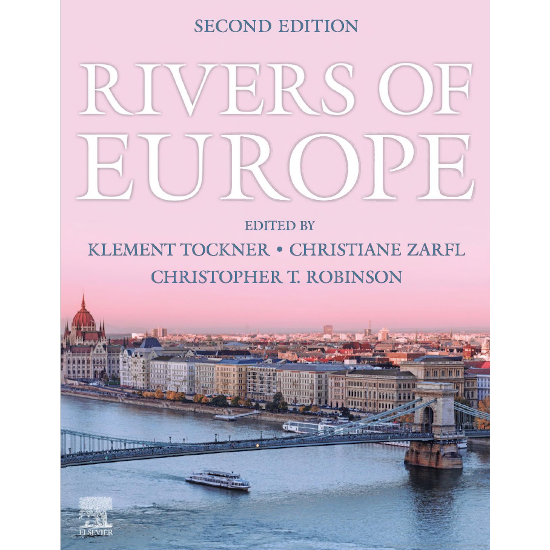
The Elsevier has published the second edition of the Rivers of Europe, ed. by K. Tockner, C. Zarfl, C.T. Robinson. As in the case of the first edition, researchers of the Faculty of Geography and the Faculty of Biology, Perm State University (PSU), contributed to the publication.
The book describes the biological and geographical features of the Volga and its tributaries, notably the Kama river and Perm-related part – serving the overall vision of the aquatic organisms and ichthyo-fauna, typical of the vast Volga-basin valley. It took 3 years to prepare the publication.
The contributors included researchers from the Department of Hydrology and Protection of Water Resources, the Department of Zoology of Invertebrates and Aquatic Ecology and the Department of Vertebrate Zoology and Ecology, PSU – making 1/3 of the section.
“The result is the most important reference book on all major European rivers, reflecting their current state. The urgent demand and feedback by its readers soon after the first publication in 2009 caused the editing team to start working on an updated version, nearly immediately,”
says Mikhail Baklanov, Head of the Department of Vertebrate Zoology and Ecology, PSU.

Interested on what is the Rivers of Europe about? Want to know more about Perm and the Kama basin?
The Volga River, at 3690 km (2293 mi), is known to be the longest river in Europe, 5th in Russia and 16th globally. The Volga flows into the Caspian Sea, the largest inland sea on Earth, covering various biomes from taiga to semidesert, holding about 151,000 rivers of which 2600 flow into the Volga directly – the Kama being its largest tributary, 5th longest river of Europe, crossing the vast Perm territory, and more.
Deriving its name from the Udmurt “kam”, meaning “river” or “current”. The river became a major link of communication between Asia and Europe. Originally colonized by Fins at the end of the 11th century, it saw the first Russian traders 3-4 centuries later, giving birth to Perm settlement and providing Imperial Russia with minerals, timber, fur and metals for production of armour and cannons.
Related section of the Book concerning the Kama river covers paleography; physiography, climate, and land use; geomorphology, hydrology, and biogeochemistry and questions of pollution; aquatic and riparian biodiversity – including plants, algae, zooplankton, zoobenthos and fish; questions of management and conservation; paleography of the catchment; physiography, climate, and land use.
Today, the Kama catchment consists of 12 administrative regions with a total population of 29 million people. Among them, >10 million (~40%) inhabit the adjacent riverine floodplain. Ferrous and nonferrous metallurgy, coal industry, oil processing, and engineering and chemical industries cause heavy mining activity. Industrial discharge from the river-side cities are the main sources of pollution.
Providing a comprehensive outlook of the Volga and Kama basin, regarding their challenges and prospects, the PSU researchers see the increased content of manganese and iron compounds in water as a result of both anthropogenic and natural factors, including the bed weathering. In general, waters of the Kama are suitable for technical and domestic water supply, after treatment and disinfection.
The book experts, contributing to the research and publication, included Dr. Svetlana Dvinskikh, ScD. Victor Noskov, ScD. Alexander Kitaev, ScD Margarita Aleksevnina, ScD Anna Istomina, ScD Elena Presnova, ScD Mikhail Baklanov, Dr. Evgeny Zinoviev from the faculties of Geography and Biology, PSU.
Please, see the PDF of the Rivers of Europe enclosed.
